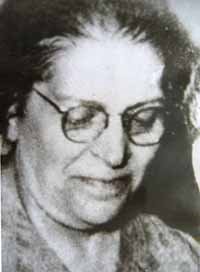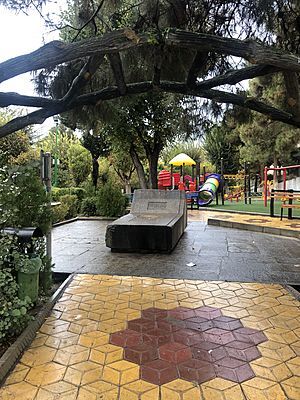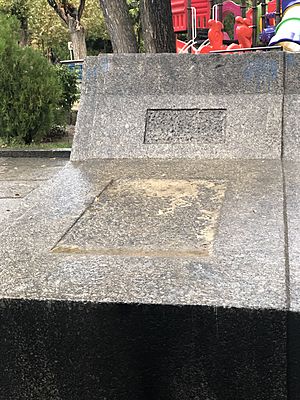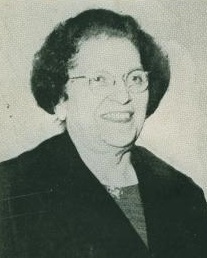Sediqeh Dowlatabadi facts for kids
Quick facts for kids
Sediqeh Dowlatabadi
|
|
|---|---|
| صدیقه دولتآبادی | |
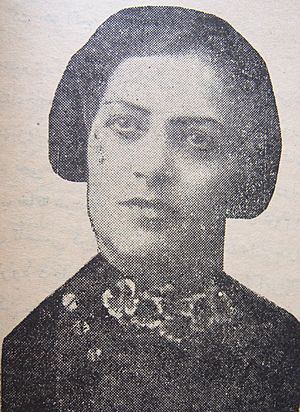 |
|
| Born | 1882 Isfahan, Iran
|
| Died | 30 July 1961 Tehran, Iran
|
Sediqeh Dowlatabadi (Persian: صدیقه دولتآبادی) was an important Iranian feminist and journalist. She was one of the first people to lead the Persian women's movement. She worked hard to improve women's lives in Iran through education and speaking out.
Contents
Early Life and Education
Sediqeh Dowlatabadi was born in 1882 in Isfahan, Iran. Her father, Hadi Dolatabadi, was a religious scholar with modern ideas. He allowed Sediqeh to start her education in Tehran. She studied Persian and Arabic. Later, she went to Dar-ol-Fonoun Academy for her high school education. When she was 15, she married Etezad al-Hakma. However, they later divorced and did not have children together.
Sediqeh was very brave and spoke her mind. Once, when she was arrested for her activities, she famously said:
Sir, I was born a hundred years late, if I had been born earlier, I would not have allowed women to be so humiliated and trapped in your chains.
Fighting for Women's Rights
Sediqeh Dowlatabadi strongly believed that education was the key for women to progress. In 1917, she started one of the first primary schools for girls. It was called Umm Al-Madaris, which means "Mother of Schools". Religious conservatives did not like this school. They forced it to close. Sediqeh was even beaten and held for three months because of it.
She also understood that women needed their own news. They needed articles that talked about their issues. So, in 1919, she started the first women's newspaper in Isfahan. It was called Zaban-e Zanan, meaning "Women's Voice". This was only the third women's newspaper in all of Iran. It published 57 issues until 1921. The newspaper was known for its modern ideas. It openly discussed women's rights. In her first article, she wrote that the paper wanted to challenge old ways of thinking. She also created the Women's Association of Isfahan around this time.
The Debate on Unveiling
In the 1920s and 1930s, there was a big discussion in Iran. People wondered if women removing their veils could help modernize the country. They thought it might help women take part more in society. Sediqeh Dowlatabadi strongly supported women removing their veils. This idea was very controversial. Because of her strong views, she even received threats to her life.
In 1926, she went to a conference in Paris for the International Alliance of Women. When she came back, she wore European clothes. She refused to wear a veil. Many believe she was the first Iranian woman to appear in public without a veil in 1928. Another woman who supported this change was Khadijeh Afzal Vaziri. When the Shah officially banned the veil in 1936, Sediqeh actively supported this change. She joined a new government group called Kanun-e Banuvan (Ladies Society). This group was led by the Shah's daughter, Princess Shams. Its goal was to unite women's groups and prepare women for unveiling.
Sediqeh Dowlatabadi also opposed British influence in Iran. She and other women showed their disagreement. They boycotted imported goods. They encouraged coffee shops not to use foreign sugar.
In 1932, the Second Eastern Women's Congress was held in Tehran. Princess Shams Pahlavi was the president. Sediqeh Dowlatabadi served as its secretary. By 1941, Sediqeh was the Director of the Women's Centre. However, this organization did not have much freedom. For example, they needed permission to hold an event to remember the poet Parvin Etesami.
Later Life and Legacy
Sediqeh Dowlatabadi passed away on July 30, 1961, in Tehran. She was 80 years old and had been ill with cancer. She was buried next to her brother. Her grave was in the Imamzadeh Ismail Cemetery in Zargandeh. Sadly, during the 1978 Revolution, her tomb was damaged.
Some of Sediqeh Dowlatabadi's personal papers and documents are kept safe. They are at the World Foundation for Social Research in Amsterdam. Part of this collection was shown in an exhibition in February 2016. The exhibition was about the history of the women's movement.


